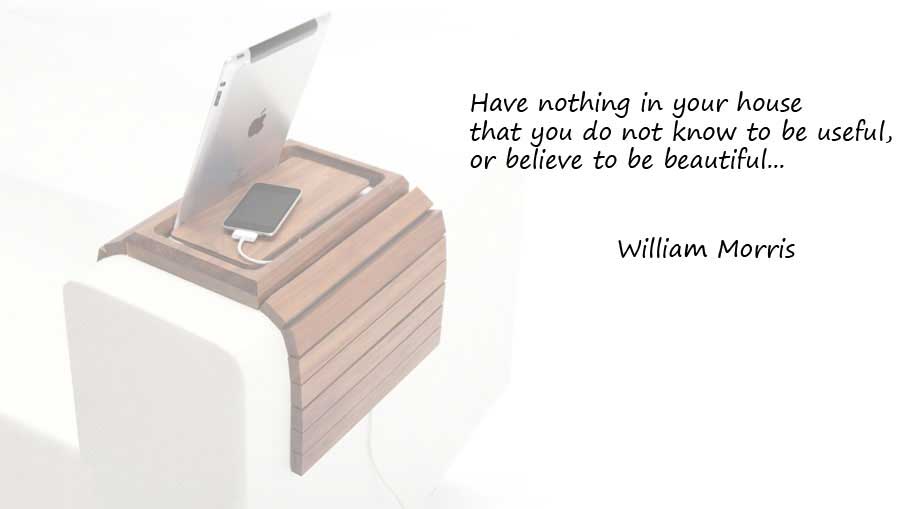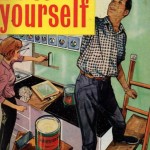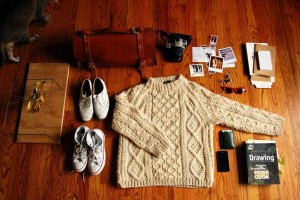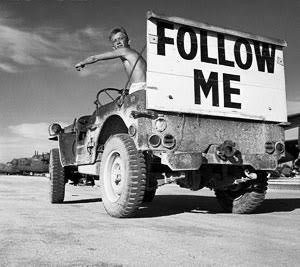I may get commissions for purchases made through links in this post.
Why decluttering declutter tips?
Because too much web articles on this topic suck. Rampant redundancy and disorganized presentation muddle good advice.
As an authority on decluttering, shouldn’t you practice what’s preached? Present your tips in a tidy manner. Don’t spin all kinds of fluff and personal boasting around it.
Doesn’t ring a bell?
Often you will stumble on declutter advice stating the obvious. Like “‘the Keep box’ is for stuff you want to keep”. Duh.
Regurgitating variations on tips doesn’t help either.
Here’s an example.
When someone recommends to clear surfaces we get that the kitchen counter, the dresser, bookshelves, and tabletops are surfaces. No need to repeat that four times.
- Also the 12 12 12 rule or (throw 12 items away, donate 12 items, return 12 items to where they belong), Ellen’s Penicillin Method or yet another gimmicky, new agey tip, Project 333 are simply fluff.
Nice to be creative and all but when you have some serious decluttering to do you need no-nonsense advice. Without having to sift through ramblings and ravings. Tips you can scan through and memorize easily in order to utilize.
So here we go, 16 quick decluttering tips, without fluff.
Get rid of stuff tips
Start small
You start. Get overwhelmed. You quit.
Sounds familiar?
Understandable. Very few people have the energy to organize a whole day.
Start small. Take baby steps. Employ the Kaizen approach. The philosophy of continuous improvement. This will help keep it fun. Or at least doable (the fun generally lies in seeing your progess).
“People rarely succeed unless they have fun in what they are doing.” —Dale Carnegie
- Start with the easy wins. One shelf. One stack of magazines. One pile of toys.
- Or 5 minutes. Or 1 hour max.
- Or 5 items. Decide. Keep or toss? Where to put it.
- Set a cooking timer. You can’t rush this. Uncluttering always takes longer.
Work with categories
Whether you get a “maybe toss this out box”, employ a “goes elsewhere in the house box”, use the three box method or four box method doesn’t matter one bit.
Boxes (or bags) are useful to categorize clutter on the spot in Keep, Sell/Donate, Trash.
When busy in a room you will stumble upon stuff that belongs somewhere else. To avoid running through the house and risking getting side tracked in another room, boxes offer a handy temporary clutter transition tool.
- The 6 months box is just a variation on the maybe box. If you’re unsure about tossing stuff, put it in there, set a reminder at 6 months later. By then, see if you missed these items. If not they can go.
This method of categorizing works for the kitchen, drawers, the medicine cabinet and so on.
Tip: regarding donating, find out what it’s worth, and take it off your taxes.
Keep the influx of new clutter at bay
Contrary to being hesitant in discarding an item, we are often unrepressed in buying new stuff.
Even if the goods are equally unnecessary as the ones you should throw out.
To avoid impulsive purchases, prepare a 30 day list. When you get the urge to buy something you may not need, add it to the list along with the date. Thirty days later, if it is still uncut, buy it.
Use the SISO method
Stuff In, Stuff Out. A.k.a the one-in one-out rule. For every new thing you buy throw or give one item away. Based on the FILO, first in, last out method used in inventory evaluation and computer science.
Deal with paper
Papers pile up easily. Employ the “two F’s” method. File it (bank statements, bills etc) or frame (kids’ paintings etc.) The rest goes out immediately.
Organizing tips
Create designated spots for everything.
Some stuff is always lingering around. You tend to put it almost anywhere. Get set places for these items. This will reduce losing stuff as well as a decluttered home.
- Put your keys in a basket, bowl or on a rack.
- The same for smartphones, if not in your hands or pockets, use set locations to charge and store them
- Velcro remotes to the side of the TV or coffee table
- Corral smaller items
Get sufficient storage solutions
Do this only after organizing. Not before. This way you will know if the containers will fit the space (on the shelf, in the closet, under the bed,)
Having the right bins, baskets and boxes will help you turn your best intentions into tangible results.
It’s easy to hoard containers. They are part of declutterin after all right?
Wrong. Avoid a redundant storage containers. Keep a few of each size.
Get clever and creative
- Store manuals in the cloud or on flash drives.
- Hang bags on clothes rails with shower curtain hooks.
- Attach power surges and loose cables to the underside of desks (e.g. with a pegboard).
- Run a power strip through the back of a nightstand for discrete recharging.
- Use command hooks to hang lesser used charging cables and power cords on the inside of cupboard doors.
Corralling smaller stuff. Use plastic containers, compartmentalized boxes or ice cube trays to organize small objects such as jewelery, stationery, cosmetics, hair clips & bands, craft supplies, screws or anything else.
DIY solutions can be useful too. Empty cereal boxes when taped together make great storage for unopened letters, magazines, newspapers and important documents.
Change what not works.
If family members don’t cooperate and for example shoes still get strewn all over the entryway instead of placed in the dedicated shoe storage find another solution.
Make solutions effortless:
For instance a shoe storage solution in which your teenagers can easily kick out their shoes instead of having to pick them up which they just won’t do.
Or fun:
Homes with kids are often cluttered with toys. An easy way to clear this up is by creating a cage-like storage space. Pick an open rack and secure stretchable ropes such as bungee cords lengthwise.
And involve them:
Ask them how they think things could be tidied up. If it’s (partially) their idea they are more inclined to follow up on implementation.
Motivational
The basic principle.
Everything you own should have value, either because it’s functional or beautiful or you just love it. Remember the question of what you’d grab if your house were on fire; that’s your baseline for determining an object’s worth.

What to throw out guidelines.
Ask yourself this one question “If I were shopping right this second, would I buy this?” If the answer is no, it goes out.
For many, throwing away belongings is difficult. There are two tricks that can help such people.
- One is the eBay Trick. Goal is to check the value of your unused items online. This will tell you what it is worth and if you would be willing to spend that amount if you had to buy these items. If the answer is no, discard your belongings.
- The second trick is called the Digital Nostalgia Trick which helps you to retain the memory of unusable items with sentimental value by capturing them on camera. By digitalizing nostalgic or otherwise stuff you find hard to depart with it gets easier. After all you still have the photos.
- The third is the Burning Home Trick. To decide what goes and what stays, ask yourself a question. If your house caught fire, what would you choose to take? The answer will determine the value of each object, how much it means and why.
The reverse clothes hanger method.
To find out what can go hang all your clothe hangers (with clothes on them) reverse direction. Have you worn it? Put it in the closet this time with the hanger facing the correct direction. After six months (or whatever you fancy), you’ll know which clothes you never wear.
Use this method for more than clothes.
Limit your closet to 40 hangers. Got something new? You’ll now need to free up a hanger. No further explanation needed.
Visualize. Imagine your ideal end situation. An optimally decluttered room. By doing so you will get a more clear view on what needs to be done. Psychology Today has more tips on how to use your imagination while decluttering.
Don’t look. See.
Get a new perspective
Sometimes it is difficult to view your own clutter objectively unless someone else is visiting. Invite friends, colleagues or someone with an infant to be able to get a clear sight on different areas of possible mess.
Good enough is good enough
Don’t be fooled by the photos in glossy magazines. Perfection is not always attainable. Instead of trying to recreate an area inspired by professional magazines, aim at making your space comfortable to your style of living. Success lies in personalization.
And even if you would manage to get such incredibly neat drawers and closets then it would be almost impossible to keep them that way. Be aware of the difference between a carefully staged setting created by a team of marketers and stylists and a real closet used day in day out by a human being.
Conclusion
These are the basics. Essential home organization tips without much ado. Got something to add? Drop your comments below. Or shoot us an email.
Featured image, Creative Commons.




















…and last but not least:
Don’t let comments clutter the declutter advice!
Use the SISO method – Stuff In, Stuff Out.
For every new comment you get here, throw or give one comment away. 🙂
Thank you so much for that great tips. Had a wonderful day because of this.